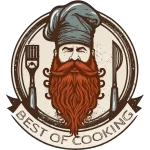Kitchen measurements can be divided into 3 main groups: Volume, Weight, and Temperature. Here is a basic description of each of the types of measurements with the tools used to take the measurements. We give some examples and suggestions based on what are used in our kitchens as well as things to take into consideration when choosing your own utensils.
Disclaimer: The links to the products below are affiliate links to products on Amazon. While we use these products or recommend these products, they are not sold by bestofcooking.com. If you choose to purchase these products through the links provided, there is no additional cost to you but we receive a commission that allows us to maintain our servers and provide this content to you.
Volume Measurements
Imperial measurements, used in the United States and a few others, employ measurements based on volume for both liquid and dry ingredients. Metric measurements, employed in most of the rest of the world, only measure liquid ingredients by volume. There are exceptions to this, especially when it comes to measuring small quantities of spices, as the accuracy of the scales is questionable.
Dry Volume Measurements
Dry volume measurements include partial teaspoons (t), tablespoons (T), and cups (C).
Teaspoons and Tablespoons
Most recipes will call for measurements as small as 1/8 teaspoon, though most teaspoon measurement sets only go down to 1/4 teaspoon. Most measurement sets include both partial teaspoon measures and a tablespoon measure.
We recommend a good metal set. They are less likely to deform in the dishwasher. Also, get one longer than wider, as this is easier to use with spices that have a lid with a measurement access.
Cups
Most recipes will call for measurements as small as 1/4 cup. Most sets have separate measures for 1/4, 1/3, 1/2, and 1 cup.
We recommend a good metal set. They are less likely to deform in the dishwasher. A flat bottom is also helpful for resting on the counter top.
Combination sets of teaspoon/tablespoon/cup measures are a bit cheaper than buying separately.
Dry Volume Unit Conversion
Each larger unit of dry measure is divisible by smaller measures:
3 teaspoons (t) = 1 tablespoon (T)
4 tablespoons (T) = 1/4 cup (C)
1 cup (C) = 16 tablespoons (T) = 48 teaspoons (t)
Liquid Volume Measurements
Liquid measures are based on ounces, cups, pints, quarts, and gallons in the Imperial measurement system, and in liters in the metric system. While an ounce is technically a weight measurement, the Imperial liquid measures are defined by the volume of weights of water, so:
1 cup (C) = 8 ounces (oz) water
1 pint = 16 ounces (oz) = 2 cups (C) = 1 pound (lb) water
1 quart (qt) = 32 ounces (oz) = 2 pints = 4 cups (C) water
1 gallon = 128 ounces (oz) = 8 pounds (lb) = 4 quarts (qt) = 8 pints = 16 cups (C) water
The Metric Liquid measures are based on liters, and are usually listed in milliliters (ml).
1 Liter (l) = 1,000 milliliters (ml) = 1,000 cubic centimeters (cc)
It is recommended to get a measuring cup set with several sizes and with both Imperial and Metric gradations. A top-down marking is also helpful to reduce errors from the meniscus. Glass or clear plastic are best, and it is very important that it includes an angled spout for easy pouring.
Weight Measurements
Measuring ingredients by weight rather than volume is much more accurate. Many of the recipes here will use weights instead of volume.
Having a good digital scale that can measure weights in grams, ounces, pounds, and kilograms is very useful. The scale should also be able to “tare”, or compensate for the vessel the ingredients are place into. Find an accurate unit with a flat, easily cleaned surface. Accuracy to 1 gram or better is highly desired, as small spice measurements can be less than 2 grams total.
Temperature Measurements
Cooking food to specific temperatures is essential for safety. Minimum temperatures are necessary to ensure that pathogens are not present in food so no one gets sick.
Some recipes require certain temperatures to cause a transformation of the ingredients, or require that the ingredients do not reach a certain temperature to prohibit a transformation.
A digital thermometer is the best, as they are easy to read, measure the temperature quickly, and are very accurate. Analog thermometers are useful in higher temperature situations where a digital thermometer would melt. Remote thermometers are much more expensive, but a very flexible for recipes requiring monitoring over long periods of time.
